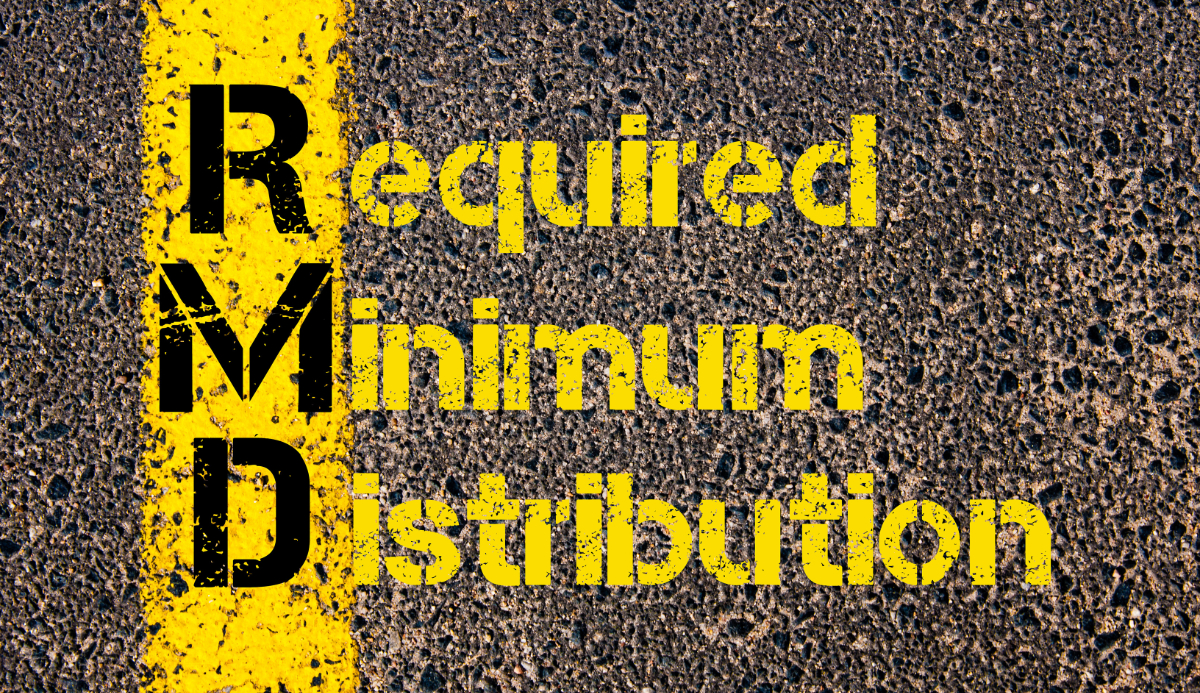What is a Required Minimum Distribution?
Required Minimum Distributions are the minimum amounts that the U.S. federal government requires an individual to withdraw annually from Individual Retirement Accounts and employer retirement plans such as 401(k)s. These traditional retirement plans are tax-deferred vehicles. When contributing to traditional retirement plans, you contribute with your pre-tax dollars. Income from interest and dividends is not taxed annually, and capital gains are not taxed upon sale. The caveat to providing favorable tax treatment for retirement accounts is that, eventually, you will have to take taxable distributions from these accounts. The required minimum distributions are taxed at your ordinary-income rate.
Who has to take an RMD?
The Internal Revenue Code requires distributions when an individual reaches age 73 (effective January 1, 2023), regardless of whether the account owner needs the money. 401(k) and 403(b) plans are unique in that their RMDs begin either at age 73 or when you retire if you are older than 73. Individuals who are 59 ½ or older may withdraw money from their retirement accounts without penalty, but it is not required until 73. Beginning in 2033, the RMD beginning age will be pushed back to age 75 under the SECURE Act 2.0.
When do I take the RMD?
The IRS requires that the first Required Minimum Distribution be taken by April 1 of the year following the year you turn 73. Subsequent RMDs must be taken annually by December 31. Meaning, if you wait until April 1 to take your first RMD, your second RMD must still be taken by December 31 of the same year.
What types of retirement plans require RMDs?
RMD rules apply to all employer-sponsored retirement plans including:
- profit-sharing plans
- traditional and Roth 401(k) plans
- 403(b) plans, and 457(b) plans
All Individual Retirement Accounts (IRAs) require a minimum distribution with the exception of Roth IRAs.
Distribution Methods
There are a number of ways that you can take your RMD in order to meet cash needs. You can take the RMD at any point during the calendar year. RMDs can also be taken as a monthly or semi-annual withdrawal instead of as one lump sum. RMDs can be taken in-kind or as cash, and up to $100,000 can be donated to qualified charities.
Donating Your RMD
Donating your RMD to a qualified charity is a powerful tax-planning tool. In order to do this, the custodian of your IRA must make the check payable directly to the charity. By donating your RMD to charity, you are not taxed on the amount of the distribution. Since you do not recognize the distribution as income, your Adjusted Gross Income (AGI) is lower, which affects several aspects of your financial life, for example, Medicare premiums. Learn more about Qualified Charitable Donations (QCDs) here.
How RMDs are Calculated
The IRS has published tables that provide individuals with a factor based on the age they turn during the calendar year. For example, if you turn 73 in 2023, your factor is 26.5. You then divide the balance of your IRA on December 31, 2022 by 26.5. The result is your RMD amount. The process is different for inherited IRAs and inherited Roth IRAs.
Tax Planning Before Age 73
Some individuals find themselves with large retirement accounts and minimal cash needs at age 73. One strategy to reduce the amount of required minimum distribution you will have to take in the future is to convert part of your IRA into a Roth IRA. By doing this, you will pay income taxes on the amount of the conversion in the year of the conversion. The benefit is that your IRA account is reduced by the amount of the conversion and the future RMD is therefore decreased. If you think this may be a good tax planning strategy, we encourage you to work closely with your CPA and financial advisor to be sure that the appropriate amount is converted.
While this blog provides an overview of Required Minimum Distributions, they can be quite complicated. As part of our wealth management services, we help clients by calculating and facilitating the distribution of RMDs annually. We consider your individual cash needs as well as charitable goals to determine the most tax-efficient way to process your RMD. Contact us to schedule an introductory meeting.
Alyssa Dalbey is a Wealth Manager with Schultz Financial Group Inc.
Schultz Financial Group Inc. (SFG) is a wealth management firm located in Reno, NV. Our approach to wealth management is different from many other wealth managers, financial advisors, and financial planners. Our team of fee-only fiduciaries strives to help our clients build their wealth across four capitals: Financial Matters, Physical Well-being, Psychological Space, and Intellectual Engagement. We provide family office and wealth management services to clients located in Nevada, California, and other states. If you’d like more information, please check out our website or reach out to us via our contact page.
Editors’ note: This article was originally published in 2021. It has been updated to reflect 2023 information.
